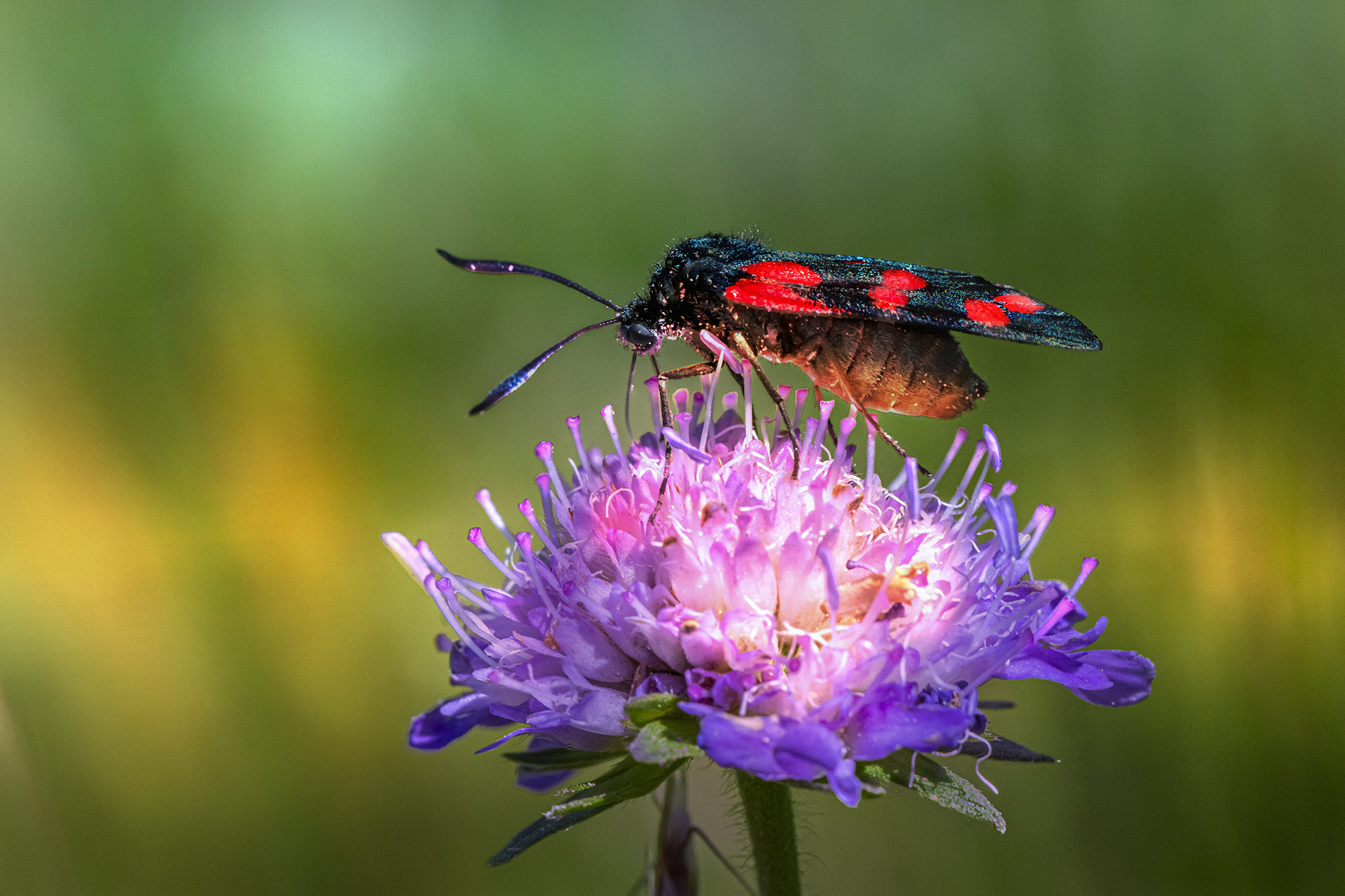Moths belonging to the genus Zygaena are commonly known as burnet moths. These striking insects are renowned for their distinctive coloration and intricate wing patterns. Here’s a brief introduction:
Physical Characteristics:
- Zygaena moths typically have a wingspan ranging from 2 to 3 centimeters, though this can vary slightly among species.
- Their wings are often adorned with vibrant colors, including shades of red, blue, black, and sometimes metallic hues, creating a visually striking appearance.
- Many Zygaena species feature bold markings, such as spots, stripes, or bands, which serve as warning signals to predators due to their association with toxicity or unpalatability.
Habitat and Distribution:
- Zygaena moths are widely distributed across Europe, Asia, and parts of Africa, inhabiting a variety of habitats, including meadows, grasslands, open woodlands, and coastal areas.
- They are often found in sunny, open habitats with abundant nectar sources, as adult Zygaena moths primarily feed on flower nectar.
Life Cycle and Behavior:
- The life cycle of Zygaena moths typically involves four stages: egg, larva (caterpillar), pupa, and adult.
- The larvae of Zygaena moths feed on various plants, with some species specializing on specific host plants. They are often associated with plants in the pea family (Fabaceae).
- Adult Zygaena moths are active during the day and are often seen flying among flowers, feeding on nectar and mating.
Ecological Role:
- Zygaena moths play a role in pollination as they visit flowers to feed on nectar, transferring pollen from one flower to another.
- Some Zygaena species possess chemical defenses, such as cyanogenic compounds acquired from their larval host plants, which make them unpalatable to predators. This defense mechanism is indicated by their bright warning coloration.
In summary, Zygaena moths are a diverse group of insects known for their colorful appearance and important ecological roles. They are a fascinating component of many ecosystems and are appreciated by entomologists and nature enthusiasts alike for their beauty and ecological significance.
Visited 238 times, 3 visit(s) today
Views: 422
Advertisements
Subscribe to the newsletter:
